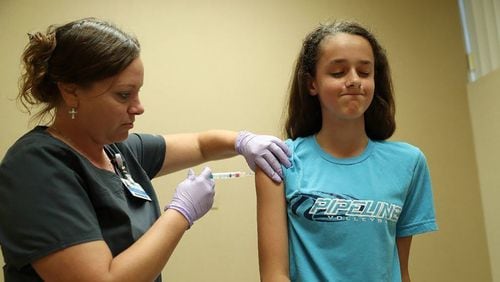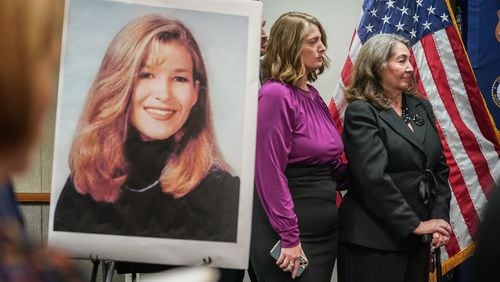Nearly 20 years after the first vaccine against human papillomavirus became available, many eligible Americans still are not getting the shot — even though it provides powerful protection against the leading cause of cervical cancer.
HPV is the most common sexually transmitted infection in the United States, and while most infections are asymptomatic and clear up on their own within two years, a small number persist and can cause cancer. HPV causes nearly all cases of cervical cancer and can also lead to penile, anal, oral, vulvar and vaginal cancers.
The HPV vaccine, delivered as two or three doses, can significantly cut the risk of infection. It “is really one of the most effective vaccines we have,” said Dr. Lauri Markowitz, the HPV team lead in the Centers for Disease Control and Prevention’s division of viral diseases. But uptake remains stubbornly low: A report released by the CDC this month showed that in 2022, only 38.6% of children ages 9 to 17 had received at least one dose of the HPV vaccine. Other new research suggests that HPV vaccination rates stalled in the wake of the coronavirus pandemic.
A recent study laid out some of the primary reasons cited by parents in the United States who don’t plan to vaccinate their children against HPV, including safety concerns, a lack of knowledge about the vaccine and a belief that it isn’t necessary.
“We are still facing an uphill battle from what I would call inappropriate messaging or incomplete messaging when the vaccine rolled out about why this is so important,” said Karen Knudsen, CEO of the American Cancer Society.
How does the vaccine work?
The HPV vaccine fools the body into thinking it has come into contact with the virus, marshaling antibodies in defense. Those antibodies can help clear the virus and prevent infection if someone is later exposed, which can happen through sex.
The vaccine offers protection from the types most likely to cause cervical and anal cancers and genital warts. Since the vaccine was introduced in 2006, infections with the types of HPV that cause most HPV-related cancers and genital warts have fallen by 88% among teen girls and by 81% among young adult women, according to the CDC.
One reason doctors are so enthusiastic about the vaccine is that it is one of very few tools to combat HPV: Condoms do not entirely prevent transmission, and there is no treatment for the virus itself. Researchers believe HPV is responsible for more than more than 90% of cervical and anal cancers and a majority of vaginal, vulvar and penile cancers.
Who should get it? And how?
Children can be vaccinated starting at age 9. The CDC recommends the vaccine for all preteens from the age of 11 or 12 and anyone up to age 26. It’s most effective before people are exposed to the virus, and “the assumption is that most people have started having sexual intercourse by age 26,” said Dr. Ban Mishu Allos, an associate professor of medicine at Vanderbilt University Medical Center.
The vaccine may still provide some benefit for people older than 26 and is approved up until age 45. The CDC says that people between the ages of 27 and 45 might get the vaccine after talking to their doctors about their risk for new HPV infections.
You can ask your primary care doctor or local health centers for the vaccine. Most insurance plans fully cover it through age 26. Children and adolescents who are uninsured or underinsured can get the shots for free through the Vaccines for Children program. After age 26, insurance may not fully cover the shot, which can cost hundreds of dollars per dose. Merck, which makes the HPV vaccine Gardasil 9, has a patient assistance program for eligible people.
Why are vaccination rates still low?
Researchers believe much of the hesitation stems from a key misunderstanding: “More people perceive it as a sexually transmitted infection prevention vaccine, as opposed to a cancer prevention vaccine,” said Kalyani Sonawane, an associate professor of public health sciences at the MUSC Hollings Cancer Center and an author of the new paper on parental attitudes toward HPV vaccination.
Sonawane’s research has also found that many parents are concerned about side effects. But doctors say many people do not experience side effects, and for those who do, the issues are generally mild and can include arm soreness, nausea, dizziness or, in some cases, fainting.
Doctors urge parents to vaccinate their children before they’re likely to become sexually active, which gives some parents pause, said Dr. Monica Woll Rosen, an obstetrician-gynecologist at the University of Michigan Medical School.
“You’re doing something to prevent them from getting cancer in 30 years,” she said, “and the disconnect might be too large for some people to really wrap their heads around.”
About the Author






